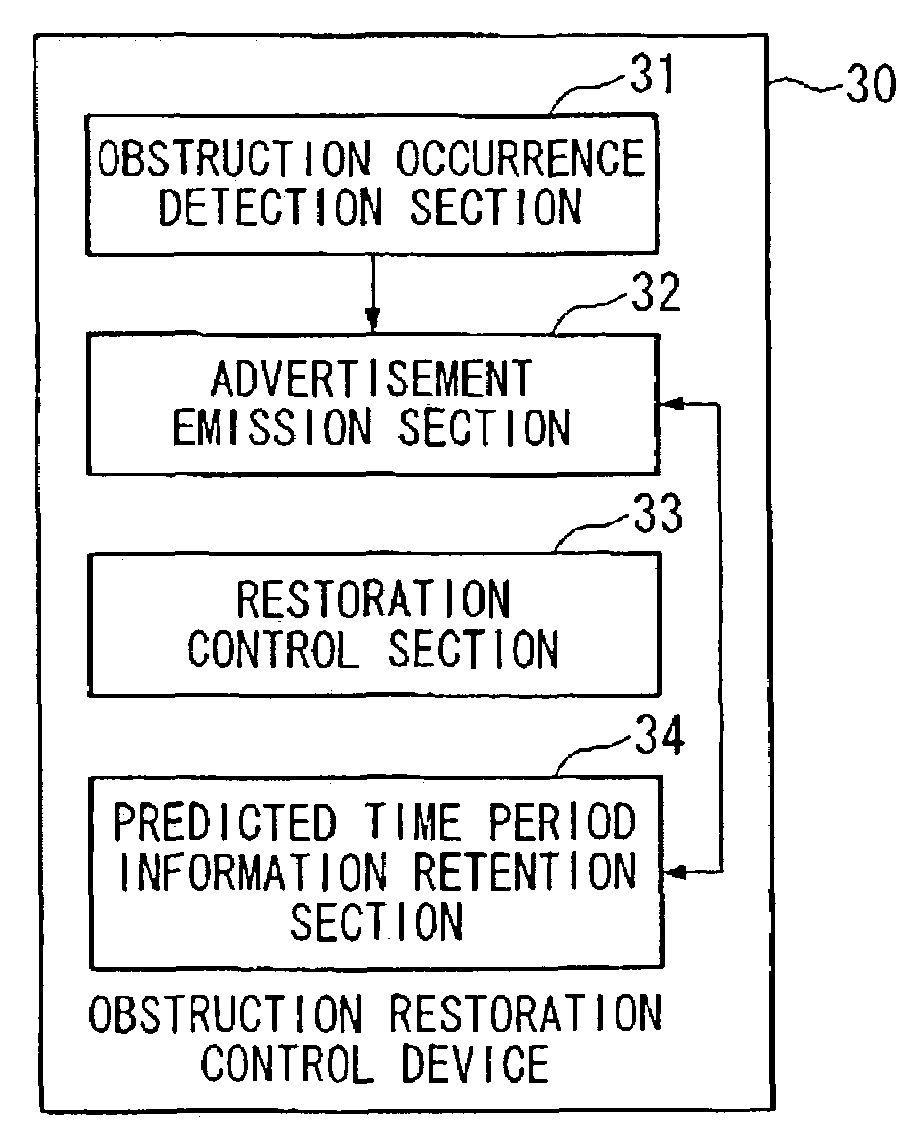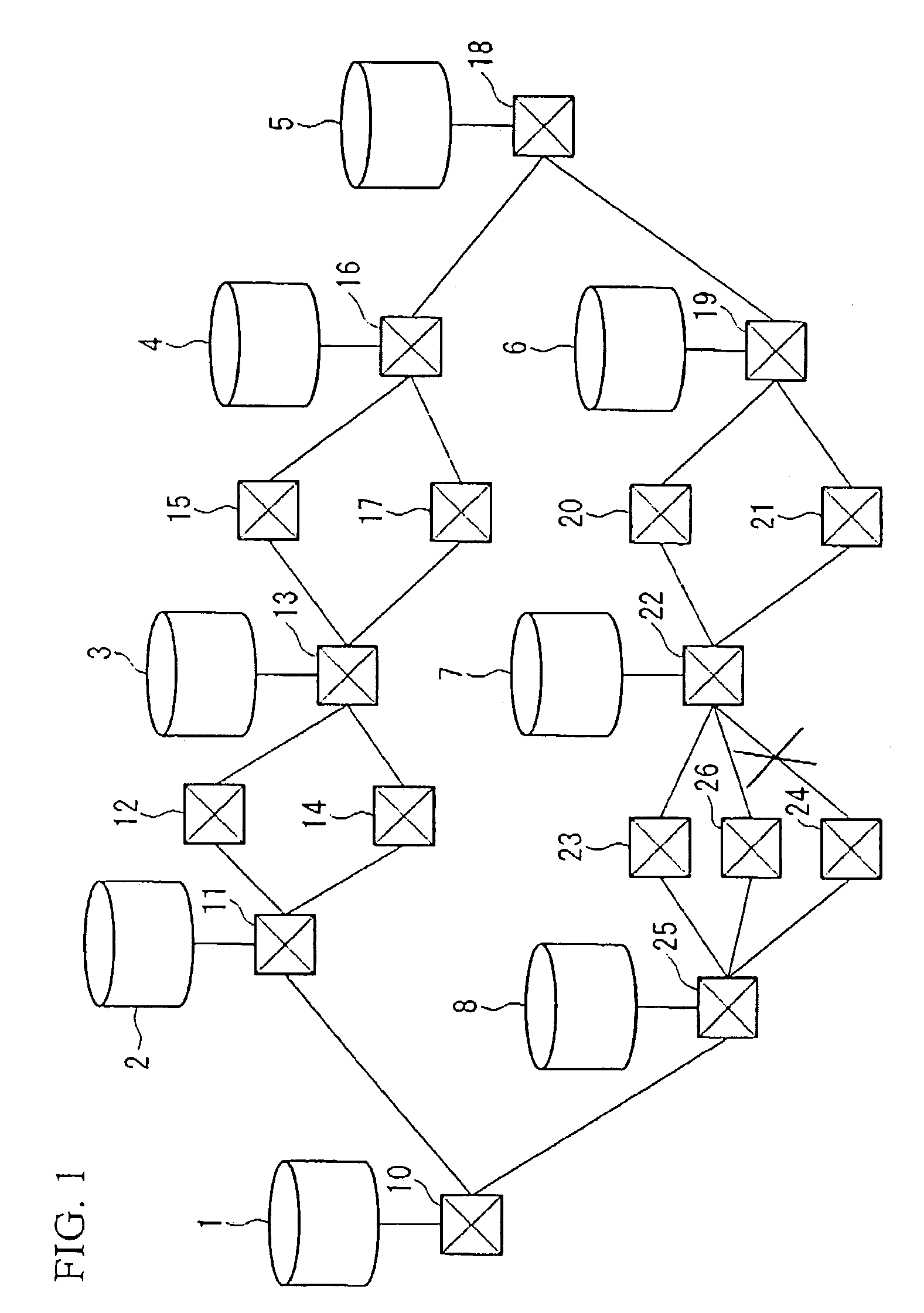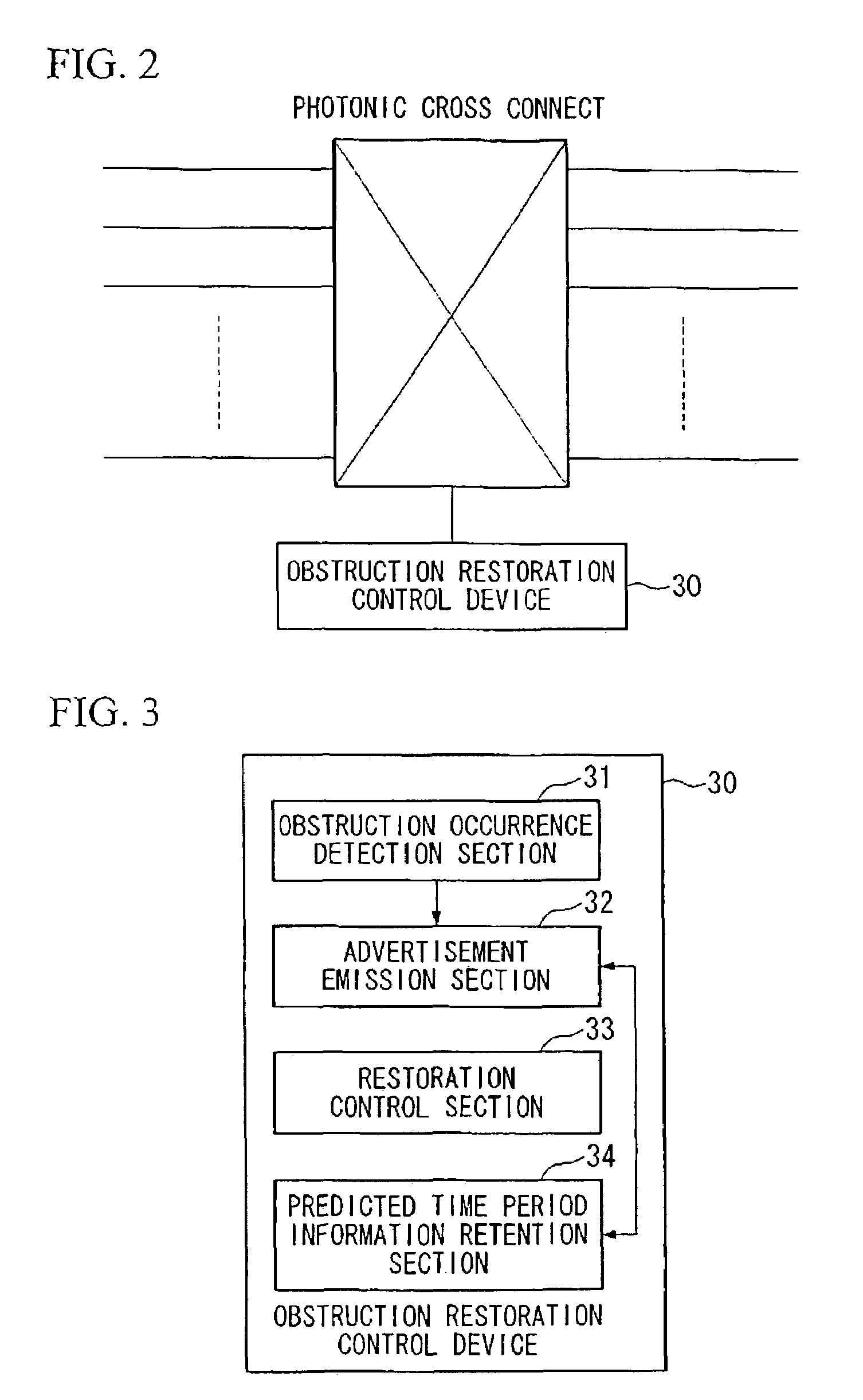Upper layer node, lower layer node, and node control method
a node control and upper layer technology, applied in data switching networks, frequency-division multiplexes, instruments, etc., can solve the problems of increasing the processing load, affecting the efficiency of network resources, so as to achieve the effect of effective exploitation of network resources
- Summary
- Abstract
- Description
- Claims
- Application Information
AI Technical Summary
Benefits of technology
Problems solved by technology
Method used
Image
Examples
Embodiment Construction
[0324]First, the first through the sixteenth preferred embodiments of the present invention will be explained.
The First Preferred Embodiment
[0325]The first preferred embodiment of the present invention will be explained with reference to FIG. 1 through FIG. 4. FIG. 1 is a conceptual view of a network according to this preferred embodiment. FIG. 2 is a structural diagram of a photonic cross connect incorporated in this preferred embodiment. FIG. 3 is a block structural diagram of an obstruction restoration control device incorporated in this preferred embodiment. And FIG. 4 is a block structural diagram of a router of this preferred embodiment.
[0326]This first preferred embodiment is a network, comprising a plurality of nodes and transmission lines provided between these nodes; among this plurality of nodes, routers 1 through 8 are upper layer nodes and photonic cross connects 10 through 26 are lower layer nodes; at least two of these routers 1 through 8 are connected together by a l...
PUM
 Login to View More
Login to View More Abstract
Description
Claims
Application Information
 Login to View More
Login to View More - R&D
- Intellectual Property
- Life Sciences
- Materials
- Tech Scout
- Unparalleled Data Quality
- Higher Quality Content
- 60% Fewer Hallucinations
Browse by: Latest US Patents, China's latest patents, Technical Efficacy Thesaurus, Application Domain, Technology Topic, Popular Technical Reports.
© 2025 PatSnap. All rights reserved.Legal|Privacy policy|Modern Slavery Act Transparency Statement|Sitemap|About US| Contact US: help@patsnap.com



